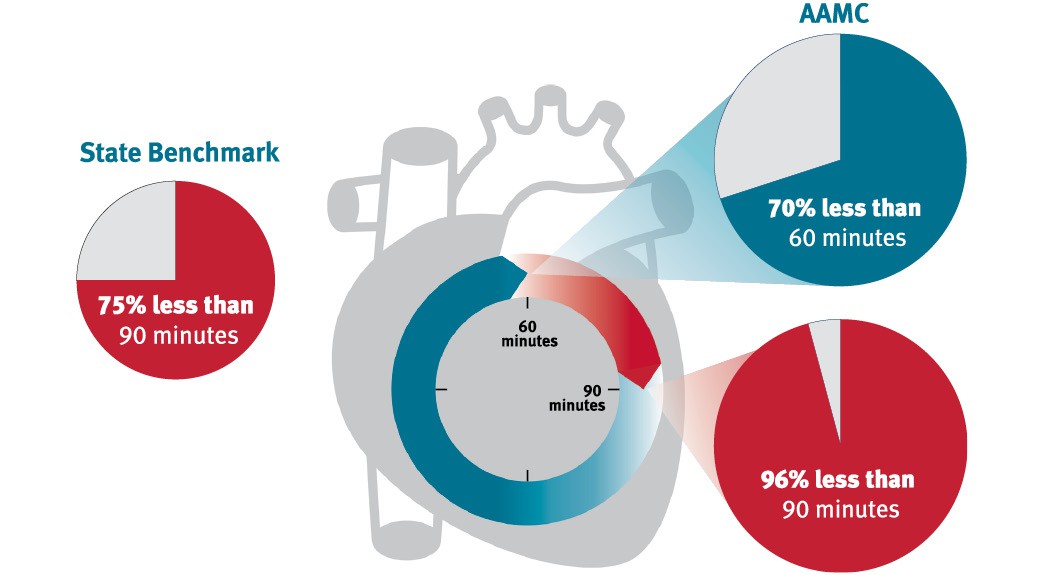The quality of an interventional cardiac care program is largely measured by its door-to-balloon time. That’s the amount of time from the moment a heart attack patient arrives in the ER to when the blocked artery is opened with an angioplasty balloon.
According to the American Heart Association, only 25 percent of hospitals in the nation are qualified to perform emergency cardiac catheterization. AAMC is one of those hospitals.
“We have a system that is so efficient that once you call 911 within our area, you can pretty much be guaranteed that your artery is going to be open within 90 minutes of that call,” says Jonathan Altschuler, MD, medical director of AAMC’s cardiac catheterization lab.
“The state’s benchmark for competency, as set by the Maryland Health Care Commission, is that 75 percent of patients have a door-to-balloon time of less than 90 minutes,” says Dr. Altschuler. “At AAMC, 96 percent have a door-to-balloon time of less than 90 minutes. Actually, 70 percent are less than 60 minutes.”
A successful program requires having a cardiac catheterization team ready to be activated 24 hours a day, 365 days a year. It also requires coordinating with top-notch emergency technicians, as well as multiple departments within the hospital.
That effort has paid off with national and state recognition for the level of cardiac care at AAMC. But in the end, it’s the patient who wins.
Find out your heart age, and if you are at risk for heart disease, with our free online heart health profiler.
 Jonathan Altschuler, MD, is an interventional cardiologist and medical director of the Cardiac Catheterization Lab at Anne Arundel Medical Center.
Jonathan Altschuler, MD, is an interventional cardiologist and medical director of the Cardiac Catheterization Lab at Anne Arundel Medical Center.
Return to Quick Heart Attack Treatment Saves Runner.




